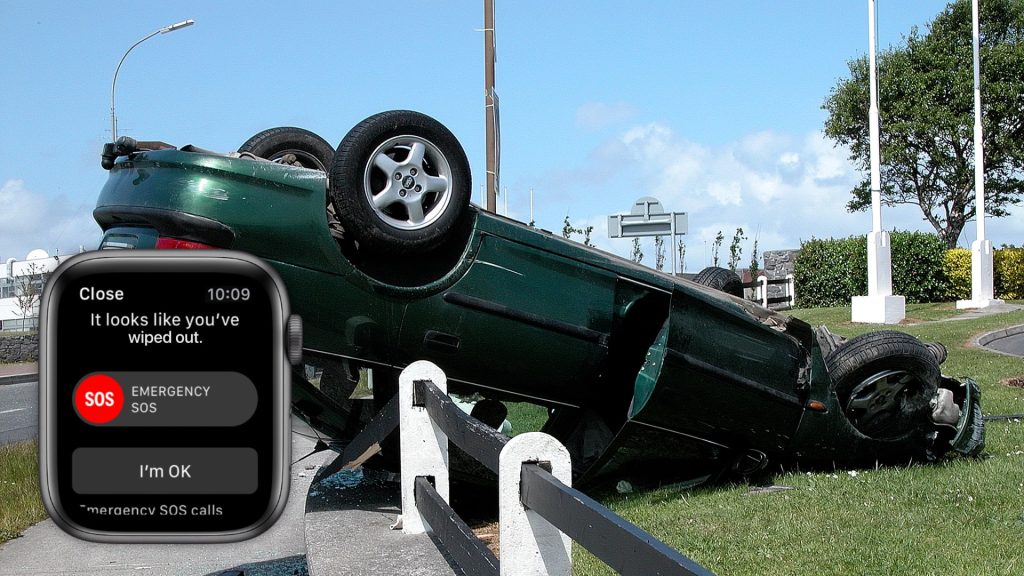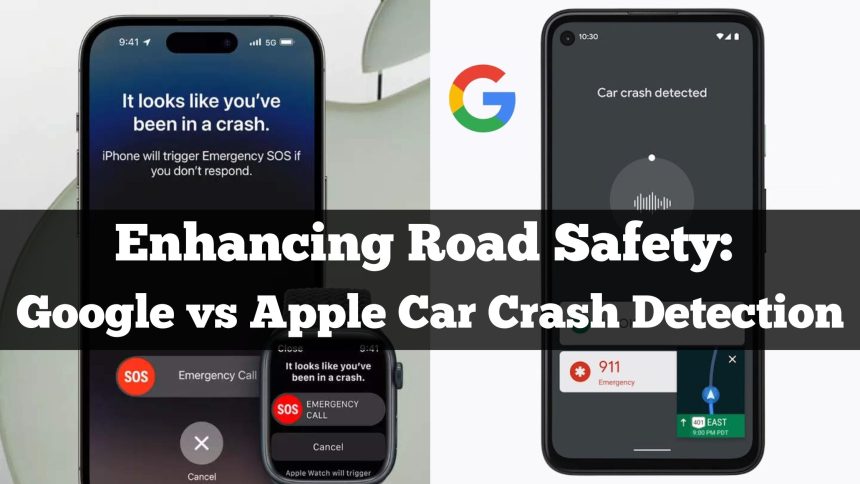In recent years, technology has been making remarkable strides in boosting our safety. Especially when it comes to car crash detection systems. Two tech giants, Google and Apple, have rolled out innovative features aimed at recognizing and reporting emergencies when users find themselves in car accidents. These systems cleverly utilize a combination of sensors and smart algorithms to identify crash conditions and lend a helping hand to users during emergencies.
In this blog, we will delve into the workings of these car crash detection systems. While also highlighting the distinctions between Google’s Pixel Car Crash Detection and Apple’s Crash Detection implemented on their iPhone and Apple Watch.

How do Crash Detection Systems Operate?
-
The Senses of Technology:
Google and Apple both depend on sensors to act as their “eyes” and “ears” when it comes to spotting car accidents. These sensors, like gyroscopes and accelerometers, essentially act as motion and speed evaluators. It’s worth noting that Apple’s newest gadgets come with new sensors capable of detecting G-forces up to a staggering 256 Gs, which makes them exceptionally responsive to any impact.
-
The Fusion of Data:
Car crash detection systems are not dependent on a single piece of information. They consider multiple factors to determine whether a crash has occurred. In addition to motion sensors, they make use of GPS data to measure high speeds, pick up on microphone activity to detect the sounds that accompany a crash and employ a barometer to pick up on pressure changes that might result from airbag deployment. Moreover, Bluetooth and CarPlay connections are considered to determine if the user is indeed in a vehicle.
-
The Power of Algorithms:
Car crashes are complex events, and as such, these systems employ complex algorithms to analyze data derived from multiple sensors. This analysis helps in making an informed judgment about whether the conditions suggesting a crash have become apparent. The algorithm takes into account a range of variables, including speed, impact force, pressure shifts, and sound levels.
-
Prompting an Emergency Response:
When a crash is detected, both Google and Apple systems are programmed to swiftly call for assistance. They begin by attempting to place a call to 911 via the regular cellular network. In cases where this initial attempt fails, they explore alternative carriers. In regions where traditional cellular service is unavailable, Apple’s devices are prepared to initiate an emergency SOS call using satellite connectivity.
Google vs. Apple: What Sets Them Apart?
Although Google and Apple’s car crash detection systems share a common underlying structure, they do exhibit some noteworthy differences:
-
Sensor Technology:
Apple’s implementation features advanced sensor-fusion algorithms that leverage high-quality gyroscopes and accelerometers, rendering the system more sensitive and accurate in detecting crashes. Google’s Pixel devices, on the other hand, utilize location data, motion sensors, and the device’s built-in microphones to recognize crash conditions.
-
False Alarms:
Google acknowledges that its system can sometimes be triggered by “high-impact activities” accidentally. In contrast, Apple has made significant efforts to minimize false alarms by simulating various crash scenarios and collaborating with crash labs to fine-tune their algorithm.
-
Emergency Services Interface:
Apple’s system adopts a 10-second countdown after a severe car crash is detected. In the event that the user is unresponsive, the system automatically dials emergency services and shares the user’s location with both responders and their designated emergency contacts. In areas with no cellular service, it can use satellite connectivity.
Google’s system employs a different approach in this regard. Pixel phones instantly alert the user with vibrations and alarms. If the user doesn’t respond or needs help, the phone automatically calls emergency services and shares the user’s location for a rapid response. It also persists in making contact under challenging network conditions, with data usage solely for crash detection, ensuring user privacy and security.
Are These Car Crash Detection Systems Reliant?
Remember, the car crash detection systems were developed by tech giants. Google and Apple represent a substantial step forward in safety and emergency response on the road. These systems harmonize sensor data, state-of-the-art algorithms, and real-world crash simulations to accurately detect and respond to car accidents. While the two technologies have some commonalities, Apple’s system offers certain advantages, including heightened sensitivity and a more robust strategy for justifying false alarms.
As technology continues to evolve, car crash detection systems are dignified to become even more effective and dependable. They stand as a testament to how technology can play a pivotal role in elevating road safety. Potentially saving lives and providing crucial assistance during unforeseen emergencies. Whether you lean towards Google’s solution or Apple’s innovation, they both highlight the profound impact technology can have on enhancing safety and security in our everyday lives.


